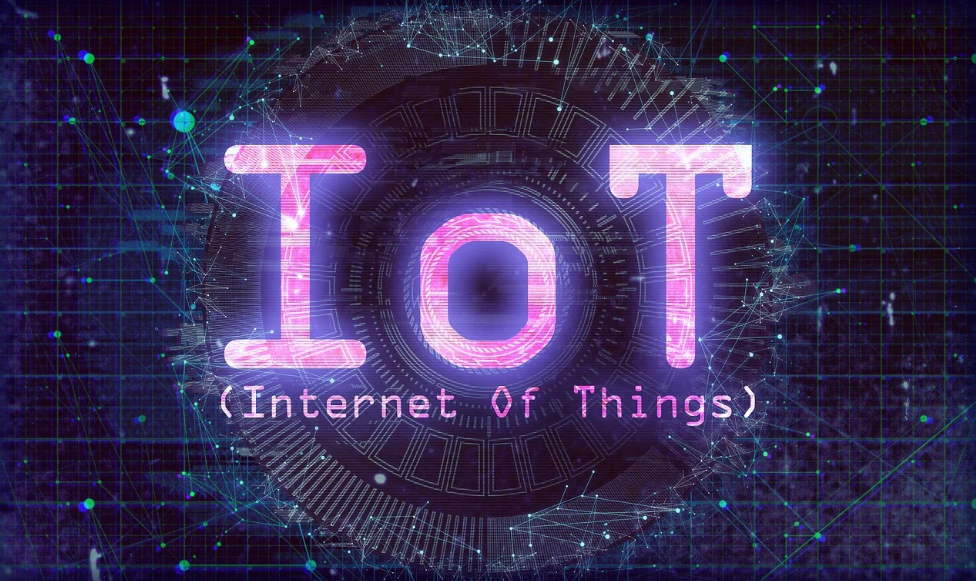Pune, India – The global internet of things market is estimated to rise from USD 478.36 billion in 2022 to USD 2465.26 billion by 2029 at a CAGR of 26.4% during the forecast period. Fortune Business Insights™ has published this information in its latest research report titled, “Internet of Things (IoT) Market Forecast, 2022-2029.” As per the report, the global market size stood at USD 384.70 billion in 2021.
According to the analysis, the penetration of smart cities and deployment of vehicle solutions will augur well for the global outlook. Prominently, blockchain technologies have set the trend, with end-users exhibiting increased traction for IoT. Investments in advanced technologies will help boost business models and streamline operations.
Key Industry Development
February 2021: Microsoft rolled out Azure IoT Edge module for Linux on Windows IoT called EFLOW to allow users to use Linux in Azure IoT as a virtual machine.
Highlights of This Report:
- In-depth information about the market growth drivers, dynamics, and obstacles.
- Elaborate data about the challenges and opportunities.
- Extensive analysis of the latest trends in the market.
- Profiles of all the companies operating in the market.
Internet of Things (IoT) Technology to be utilized to Tackle Coronavirus Situation
Healthcare professionals and producers are working incessantly to offer appropriate services in order to safeguard residents from being infected by novel coronavirus disease. Moreover, hospitals have initiated the usage of linked thermometers to observe patients and work for personnel. For example,
In January 2021, Nuance Communication, Inc. unveiled an AI-empowered virtual associate medium for patient communication in order to alter vocal and digital experiences throughout the patient’s stay at the hospital.
Strong Demand from Healthcare Sector to Boost IoT Market Growth
Although the COVID-19 pandemic ravaged the global economy, the penetration of the internet of things remained pronounced. The trend was majorly attributed to the healthcare sector exhibiting traction for advanced technologies, including AI and cloud computing. Prominently, governments have upped investments in the industry vertical. For instance, Singapore announced an infusion of USD 3.5 billion in 2020 for digitization to help recover from the pandemic. Prevailing trends suggest stakeholders will continue to prioritize IoT over the next few years.
Drivers and Restraints
Expanding Footfall of Smart Homes to Propel Growth Potentials
The rising trend for smart city solutions has encouraged stakeholders to bolster their penetration across untapped areas. The footfall of smart meters, smart light and sensors will further gain prominence from the demand for smart homes and buildings. It is worth noting that Industry 4.0 has created a wave of innovation across advanced and emerging economies.
For instance, Saudi Arabia has stood out for its massive projects, developing four smart cities—Amaala, NEOM, the Red Sea Project and Qiddiya. With the implementation of smart technologies, industry players anticipate internet of things market share to gain significant traction. Meanwhile, escalating concerns regarding privacy and security of data have challenged stakeholders gearing to expand their portfolios.
The IoT platforms and gadgets are utilized for observing movement, infrastructures, and air and water superiority to refine infrastructure, public services, as well as services. For example, according to IoT Analytics, the European Innovation Partnership for Smart Cities and Communities (EIP-SCC) has expended about USD 1.12 billion to build around 300 smart cities based in Europe in 2019.
This is expected to bolster the internet of things industry growth.
Report Coverage
The report provides a comprehensive view of the market share, size, volume and revenue. It has also deep-dived into SWOT analysis and Porters’ Five Force Analysis. The report has been prepared through qualitative and quantitative analysis to boost the strategic approach. Besides, a slew of primary interviews with major stakeholders and suppliers has bolstered the significance of the report. Primary data has been collected through telephonic conversations, questionnaires and emails. The report also includes secondary sources, including SEC filings, government websites and press releases.
Segmentations
In terms of component, the market is segmented into solution & services and platform. The platform is sub-segmented into cloud platform, device management and network management. The solution from the solution & services is sub-segmented into data management, network band management, remote monitoring, security and real-time streaming analytics.
On the basis of end-user, the industry is segregated into IT & telecom, BFSI, healthcare, government, retail, agriculture, manufacturing, transportation, sustainable energy and others.
Based on region, the market covers Europe, North America, Asia Pacific, South America and the Middle East & Africa.
Competitive Landscape-
Key Companies Aim to Launch New Solutions to Intensify Competition
The market houses a large number of enterprises that are currently aiming to launch new products for intensifying competition. They are also investing in research and development activities to bring in their in-house products.
Regional Insights
Bullish Adoption of Cloud to Solidify North America Market Position
North America market outlook will be strong against the backdrop of the rising footfall of cloud-based platforms across the U.S. and Canada. Prominently, IoT-enabled devices and R&D development activities will continue to pick pace across BFSI, healthcare and sustainable energy sectors. Moreover, the presence of prominent companies, including IBM, Microsoft, Amazon Web Services and Google, have expedited innovations in the U.S.
Leading companies project Europe internet of things market growth to witness an appreciable gain following the demand from the healthcare sector. The flourishing healthcare industry and the development of smart technologies will augment the footfall of big data analytics and IoT. Prominently, predictive, descriptive, and diagnostic analytics have become trendier across the U.K., France, Germany, and Italy.
Asia Pacific market revenue will observe a notable gain on the back of thriving smart city projects and investments in IT & telecom. Notably, end-users have upped investments in smart devices to expand their presence in emerging countries. According to GSMA Intelligence report 2020, China accounts for 64% of the 1.5 billion global internet of things connections. In essence, BFSI and healthcare sectors will remain prominent consumers of IoT during the assessment period.
Major Players Profiled in the Report:
- Amazon Web Services, Inc. (Washington, U.S.)
- Intel Corporation (California, U.S.)
- Microsoft Corporation (Washington, U.S.)
- PTC Inc. (Massachusetts, U.S.)
- Robert Bosch GmbH (Gerlingen, Germany)
- Cisco Systems, Inc. (California, U.S.)
- IBM Corporation (New York, U.S.)
- Oracle Corporation (Texas, U.S.)
- SAP SE (Walldorf, Germany)
- Siemens AG (Munich, Germany)
Major Table of Contents:
- Global Internet of Things Industry Size Estimates and Forecasts (Quantitative Data), By Segments, 2018-2029
- Key Findings
- By Component (USD)
- Platform
- Device Management
- Cloud Platform
- Network Management
- Solution & Services
- Solution
- Real-Time Streaming Analytics
- Security
- Data Management
- Remote Monitoring
- Network Band Management
- Services
- Solution
- Platform
- By End-use Industry (USD)
- Banking, Financial Services and Insurance (BFSI)
- Retail
- Government
- Healthcare
- Manufacturing
- Agriculture
- Sustainable Energy
- Transportation
- IT & Telecom
- Others
- By Region (USD)
- North America
- Latin America
- Europe
- Middle East & Africa
- Asia Pacific
- North America Internet of Things Industry Size Estimates and Forecasts (Quantitative Data), By Segments, 2018-2029
- Key Findings
- By Component (USD)
- Platform
- Device Management
- Cloud Platform
- Network Management
- Solution & Services
- Solution
- Real-Time Streaming Analytics
- Security
- Data Management
- Remote Monitoring
- Network Band Management
- Services
- Solution
- Platform
- By End-use Industry (USD)
- Banking, Financial Services and Insurance (BFSI)
- Retail
- Government
- Healthcare
- Manufacturing
- Agriculture
- Sustainable Energy
- Transportation
- IT & Telecom
- Others
- By Country (USD)
- United States
- By Platform
- Canada
- By Platform
- United States
- Latin America Internet of Things (IoT) Market Size Estimates and Forecasts (Quantitative Data), By Segments, 2018-2029
- Key Findings
- By Component (USD)
- Platform
- Device Management
- Cloud Platform
- Network Management
- Solution & Services
- Solution
- Real-Time Streaming Analytics
- Security
- Data Management
- Remote Monitoring
- Network Band Management
- Services
- Solution
- Platform
- By End-use Industry (USD)
- Banking, Financial Services and Insurance (BFSI)
- Retail
- Government
- Healthcare
- Manufacturing
- Agriculture
- Sustainable Energy
- Transportation
- IT & Telecom
- Others
- By Country (USD)
- Brazil
- Mexico
- Rest of Latin America
Source: Fortune Business Insights





